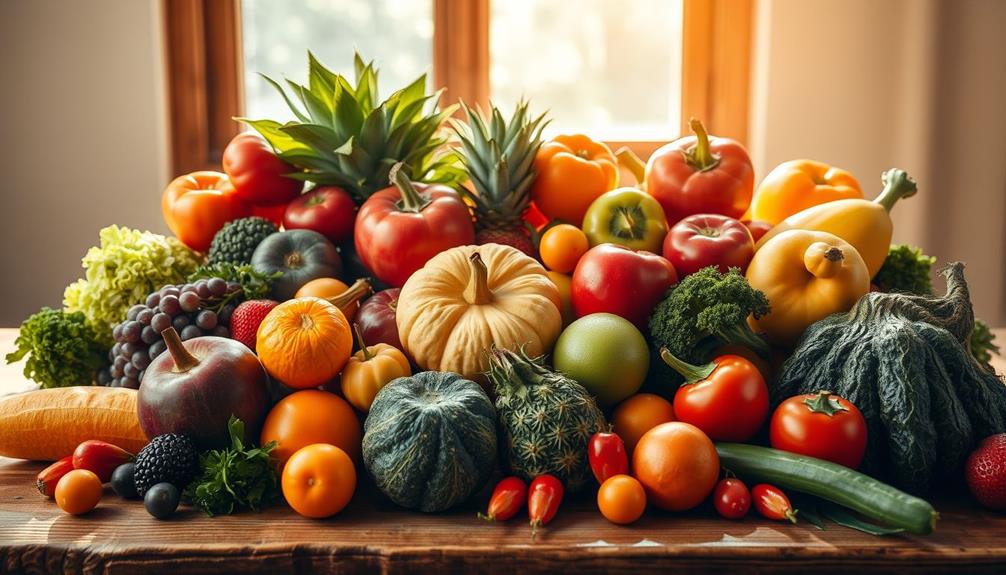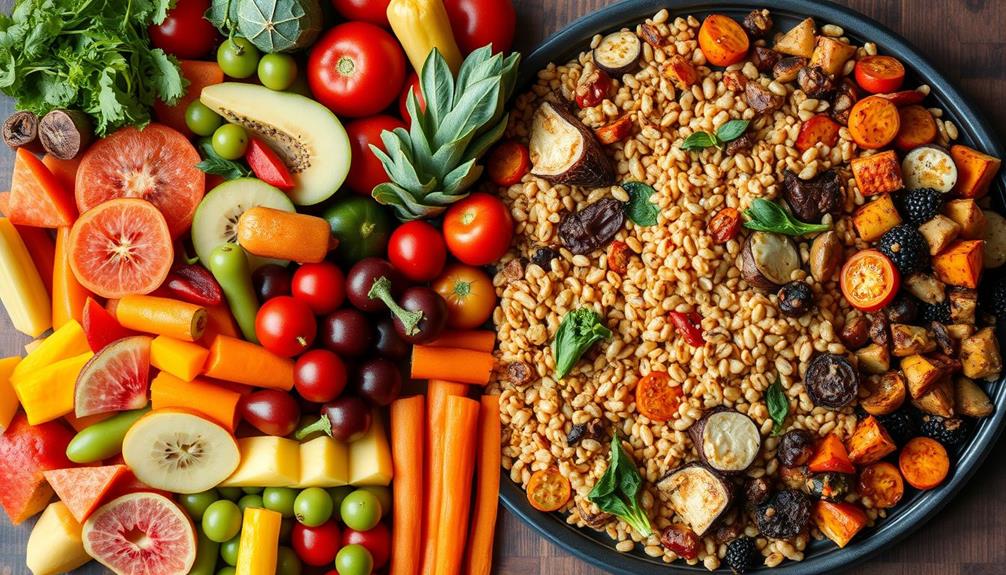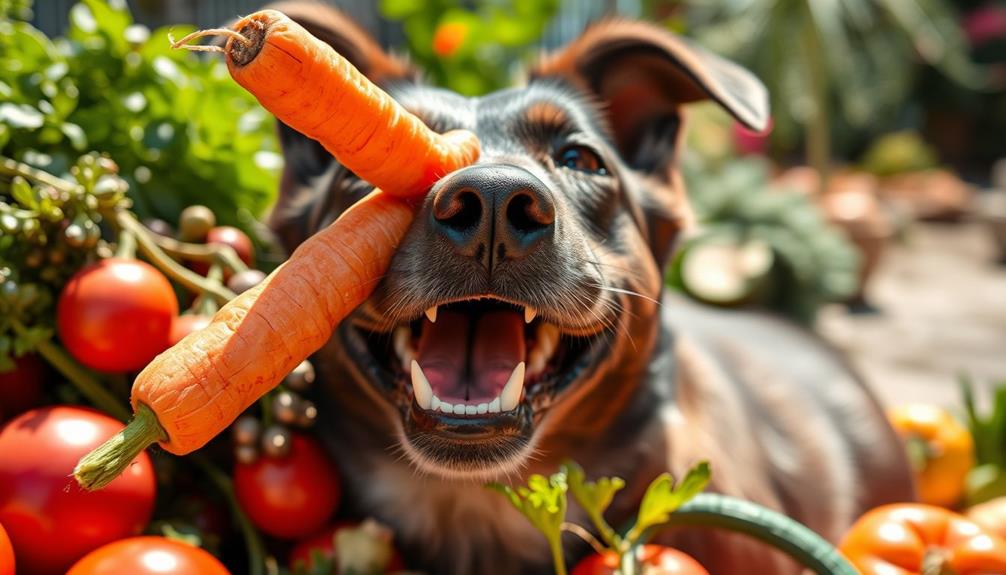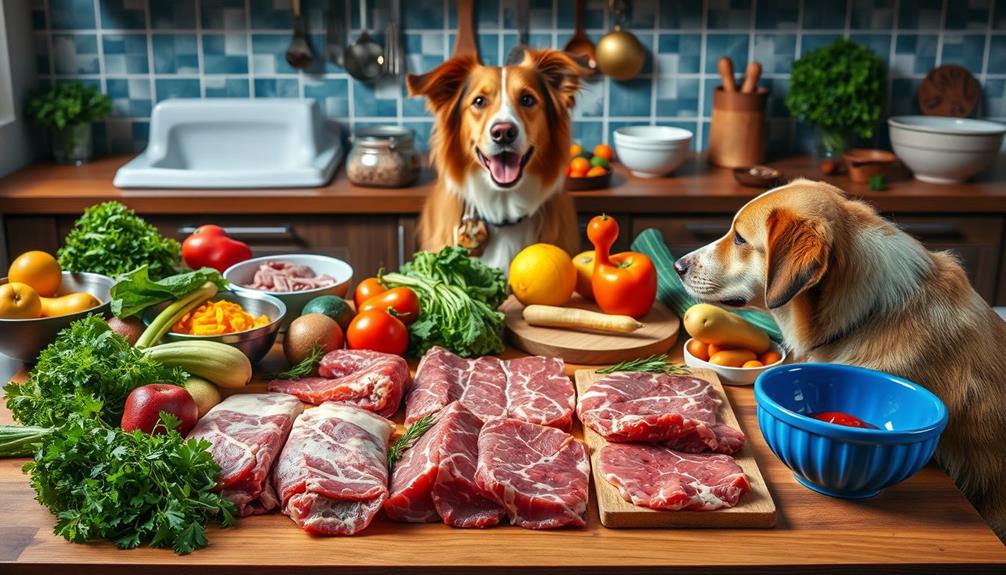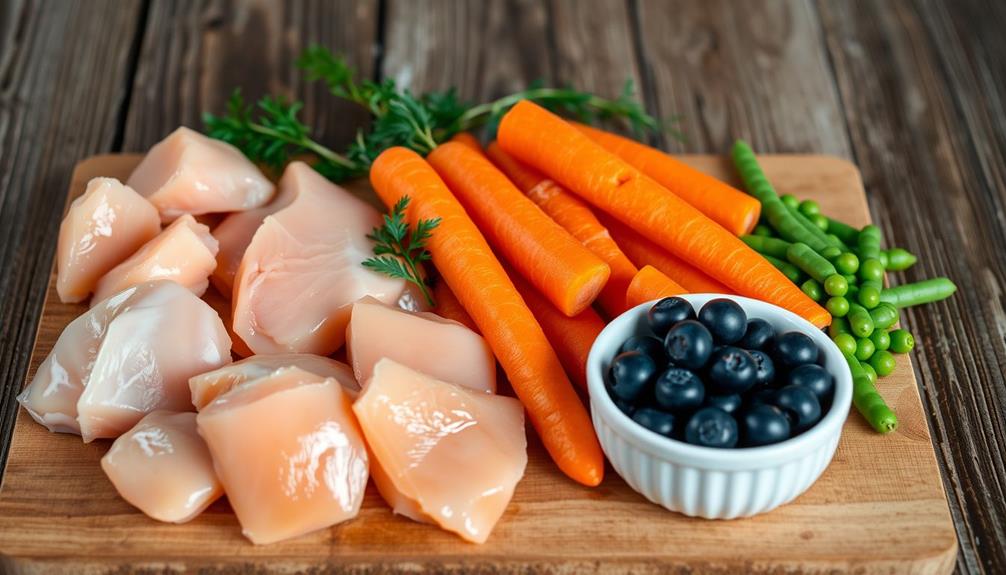The Raw Food Diet can work for weight loss and boost your nutrient intake, but it also has its downsides. You might enjoy initial weight loss, thanks to its high fiber content and focus on fresh produce. However, you could miss out on essential nutrients like B12 and omega-3s. Also, sticking to this diet can be tough due to the high costs of organic foods and the time needed for preparation. If you're curious about how to navigate these challenges and maximize the benefits, there's more you can discover to make this lifestyle work for you. In order to make the raw food diet work for you, it’s important to find ways to incorporate essential nutrients that may be lacking, such as B12 and omega-3s, through supplementation or carefully chosen food sources. Additionally, exploring the benefits of raw food, such as increased energy, improved digestion, and lower risk of certain chronic diseases, can help keep you motivated and committed to this lifestyle. With proper planning and understanding of the potential challenges and benefits of raw food, you can create a sustainable and nourishing way of eating that works for your individual needs.
Key Takeaways
- The Raw Food Diet can promote initial weight loss due to high fiber content, but long-term adherence may lead to nutritional deficiencies.
- Nutrient intake from raw foods includes vitamins and minerals, although it may lack essential nutrients like B12, D, and omega-3s.
- Cooking can enhance nutrient absorption, meaning some beneficial compounds are less available in raw foods.
- The diet's restrictive nature and reliance on organic ingredients can result in higher costs and foodborne illness risks.
- Success with the Raw Food Diet often requires significant preparation time, advanced kitchen skills, and support from online communities.
Overview of the Raw Food Diet
Emphasizing a connection with nature, the raw food diet focuses on consuming uncooked and unprocessed foods. Typically, followers consume about 75%-80% plant-based foods, aiming to keep their meals below 115°F (46°C) to preserve essential nutrients and natural enzymes. This diet gained traction in the late 1800s, driven by the belief that cooking diminishes the nutritional value of foods.
Additionally, incorporating fresh juices can enhance the antioxidant intake, benefiting overall health and aiding in detoxification, as seen in juice diets.
You'll find that raw food diets often include fresh fruits, vegetables, nuts, and seeds, which are staples in the pantry of any adherent. For those who incorporate animal products, unpasteurized dairy and raw meats are common choices.
To prepare these meals, you might rely on tools like blenders and food processors, which help enhance variety while maintaining nutrient integrity.
Since the focus is on whole ingredients, the raw food diet encourages you to avoid processed foods. Instead, you'll explore a vibrant array of flavors from natural, uncooked options, allowing you to connect with your meals on a deeper level.
Nutritional Benefits and Concerns
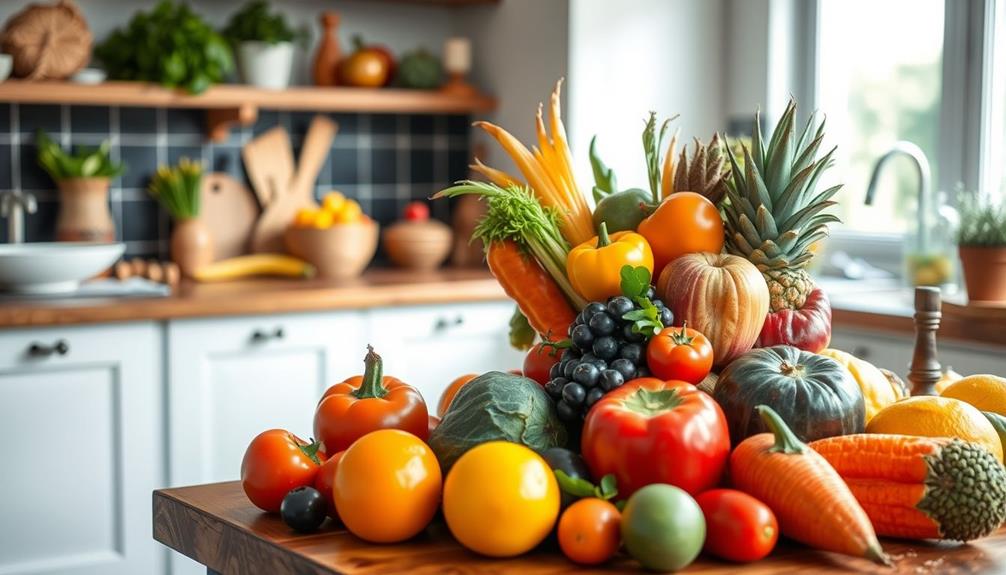
The raw food diet offers several nutritional benefits, primarily due to its high content of fiber, vitamins, and minerals. This diet can increase your satiety, which may help with weight loss by lowering your overall calorie intake. However, it's vital to be aware of potential nutritional deficiencies. Many people on a raw foods diet lack essential nutrients like vitamin B12, vitamin D, iron, and omega-3 fatty acids.
Additionally, the acidic and sugary nature of raw fruits can lead to dental erosion, while dried fruits might contribute to tooth decay if they stick to your teeth. Furthermore, while raw foods can be nutritious, cooking enhances the bioavailability of certain nutrients like lycopene and beta carotene. This suggests that a balanced diet, combining raw and cooked foods, could optimize your nutrient intake.
Lastly, the restrictive nature of a raw food diet can be challenging to maintain long-term. You should also consider the risk of foodborne illnesses, which can arise from harmful bacteria present in raw foods.
| Nutritional Aspect | Benefits | Concerns |
|---|---|---|
| Fiber | Increases satiety | Possible digestive issues |
| Vitamins & Minerals | Rich in nutrients | Lacks essential nutrients |
| Dental Health | Natural sugars | Risk of dental erosion |
| Nutrient Absorption | High in raw foods | Cooking enhances bioavailability |
| Diet Restriction | Promotes healthy eating | Difficult to maintain |
Weight Loss Potential
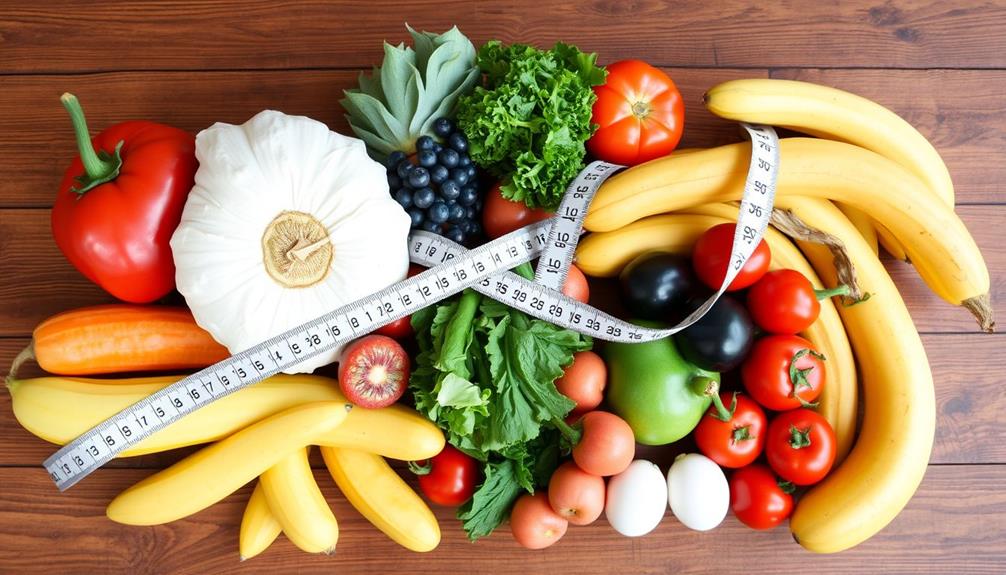
Following the discussion on nutritional benefits and concerns, it's clear that the raw food diet can greatly impact weight loss. Many people experience initial weight loss due to the diet's focus on low-calorie, nutrient-dense foods, with studies showing an average loss of 8.4 pounds over 6.7 months. This weight loss can be attributed to its high fiber content, which promotes satiety and helps lower body weight compared to traditional diets.
Additionally, the diet's emphasis on fresh fruits and vegetables can provide essential vitamins and minerals that support overall health and well-being, similar to foods beneficial for managing gout symptoms.
However, the sustainability of the raw food diet raises several concerns. While you might shed pounds at first, long-term adherence can lead to nutritional deficiencies, making it harder to maintain your weight loss. The restrictive nature of the diet creates dietary challenges, especially when dining out or finding suitable options.
Additionally, the high cost of organic foods can be a barrier to consistency.
Ultimately, while the raw food diet may offer significant weight loss potential initially, the key to success lies in your ability to navigate these challenges and guarantee a balanced intake of essential nutrients over time. Without addressing these factors, maintaining your results may become increasingly difficult. Raw food diet benefits can include improved digestion, increased energy levels, and better overall health. However, it is important to note that these benefits can only be sustained with careful planning and attention to nutritional balance. By focusing on a variety of raw fruits, vegetables, nuts, and seeds, while also incorporating potential supplements, it is possible to enjoy the advantages of a raw food diet while avoiding potential deficiencies. In the end, the key is to approach the raw food diet with mindfulness and consideration for long-term health and wellness.
Practical Challenges and Costs

Maneuvering the practical challenges and costs of a raw food diet can be intimidating. One of the first hurdles you'll face is the expense. Organic ingredients typically cost more, and you might need high-end kitchen appliances, like blenders and dehydrators, which can range from $100 to $700. This initial investment can strain your budget.
Additionally, incorporating essential oils for health benefits can add to your wellness routine, but may also contribute to overall costs.
You'll also discover that following a raw food diet requires significant preparation time and advanced kitchen skills. If you have a busy lifestyle, maintaining adherence to this diet can be tough.
While budget strategies like buying in bulk and using coupons can help reduce costs, finding a wide variety of raw foods year-round remains a challenge, especially when dining out.
You may find yourself seeking specialty stores for organic options, which can feel limiting. The restricted variety of raw foods might lead to feelings of monotony or deprivation, making it harder to stick with the diet in the long run.
Ultimately, successfully maneuvering these practical challenges and costs demands careful planning and dedication to truly enjoy the benefits of a raw food lifestyle.
Getting Started With Raw Foods
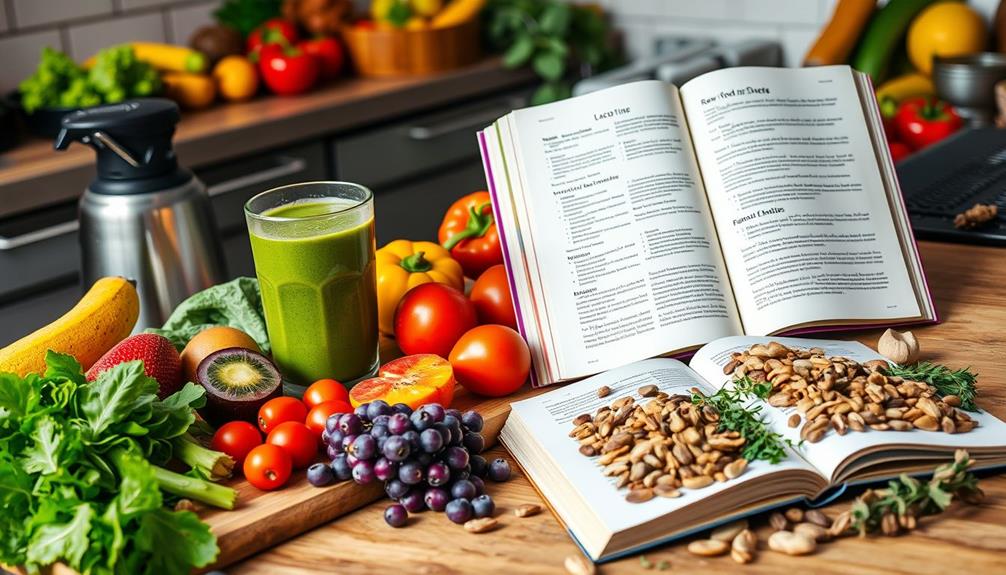
Starting a raw food diet can feel overwhelming, but with the right approach, it becomes a rewarding journey. To kick things off, aim to consume at least 75-80% of your daily intake from uncooked, unprocessed plant-based foods. This means incorporating plenty of fresh fruits and vegetables, nuts, and seeds into your meals.
Exploring various brewing methods can also enhance your experience, as some raw food enthusiasts enjoy cold brew coffee made from high-quality, ethically sourced beans.
Essential kitchen tools like blenders, food processors, and dehydrators can greatly enhance meal variety and simplify the preparation process. When preparing raw foods, remember to thoroughly wash all produce to prevent foodborne illnesses, especially with raw vegetables and fruits.
To keep your meals exciting, research raw food recipes and meal prep strategies online. This will help you efficiently plan your diet while sticking to raw food principles.
You might also want to join online communities focused on raw foods. These platforms can offer support, inspiration, and tips as you shift to this lifestyle.
Frequently Asked Questions
What Is the Truth About the Raw Food Diet?
The truth about the raw food diet is complex. You might enjoy increased fiber and nutrients, but you'll face potential deficiencies and safety risks. It's essential to plan carefully and consider balanced nutrition for sustainability.
Is There Any Science Behind Raw Diets?
Yes, there's science supporting raw diets, showing cooking enhances nutrient absorption. However, long-term adherence can lead to deficiencies. You should balance raw foods with cooked options and consult a nutrition expert for guidance.
What Do Doctors Say About the Raw Food Diet?
Doctors see the raw food diet as a double-edged sword; it can slice through weight gain but risks nutritional gaps. They urge you to prioritize safety and balance, recommending professional guidance for tailored eating plans.
Is a Raw Food Diet Really Good for People?
A raw food diet might seem appealing, but it can lead to nutrient deficiencies and health risks. You'll need to reflect on your nutritional needs and find balance to guarantee long-term health and well-being.
Conclusion
In exploring the raw food diet, it's clear that while it offers some nutritional benefits, it also comes with challenges. You might find it revitalizing and energizing, but the weight loss potential can vary greatly among individuals. Remember, balance is key—extreme diets aren't always sustainable or healthy. Before diving in, consider your lifestyle and consult with a professional. Ultimately, what works best for you is what matters most in achieving your health goals.

